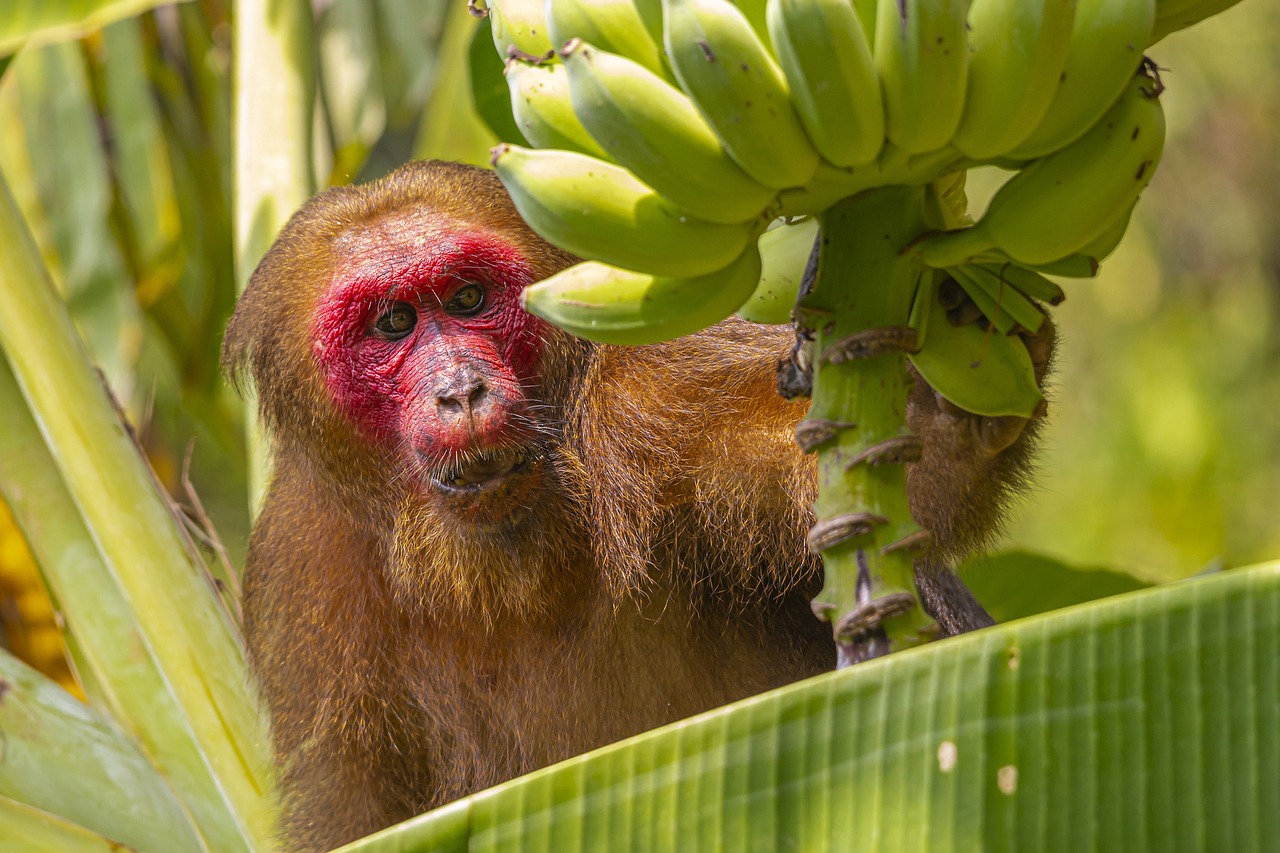The stump-tailed macaque (Macaca arctoides), also known as the bear macaque, is a species of Old World monkey native to Southeast Asia. Here are some key features and characteristics of the stump-tailed macaque:
- Physical Description: Stump-tailed macaques are medium-sized monkeys with a stocky build. They have a distinctive short, almost non-existent tail, giving them their common name. Their fur is typically dark brown to grayish-brown on the back, with lighter fur on the underside. They have hairless faces with prominent cheek pouches and a short muzzle.
- Distribution: Stump-tailed macaques are found in various countries across Southeast Asia, including parts of Thailand, Myanmar, Laos, Vietnam, and China. They inhabit diverse habitats ranging from tropical rainforests to montane forests and occasionally venture into agricultural areas.
- Social Structure: Stump-tailed macaques live in social groups known as troops, which typically consist of several individuals led by a dominant male. These groups can vary in size from a few individuals to over 100 members, depending on factors such as habitat and food availability. Within the troop, there is a complex social hierarchy determined through interactions and displays of dominance.
- Diet: Stump-tailed macaques are omnivorous, feeding on a variety of foods including fruits, leaves, seeds, insects, and small vertebrates. They are opportunistic feeders and will exploit whatever food sources are available in their habitat.
- Behavior: Stump-tailed macaques are primarily diurnal, meaning they are active during the day. They spend much of their time foraging for food, grooming, and engaging in social interactions within their troop. They are also known to use vocalizations, facial expressions, and body postures to communicate with one another.
- Conservation Status: Stump-tailed macaques are classified as Near Threatened by the International Union for Conservation of Nature (IUCN). They face threats from habitat loss due to deforestation, human encroachment, and hunting for their meat and body parts, which are sometimes used in traditional medicine. Conservation efforts are underway to protect their remaining habitats and mitigate human-wildlife conflicts.
Overall, the stump-tailed macaque is an important species in Southeast Asian ecosystems, playing a role in seed dispersal, forest regeneration, and ecosystem health. Efforts to conserve their populations are essential for maintaining biodiversity in the region.
Views: 20
Subscribe to the newsletter:
